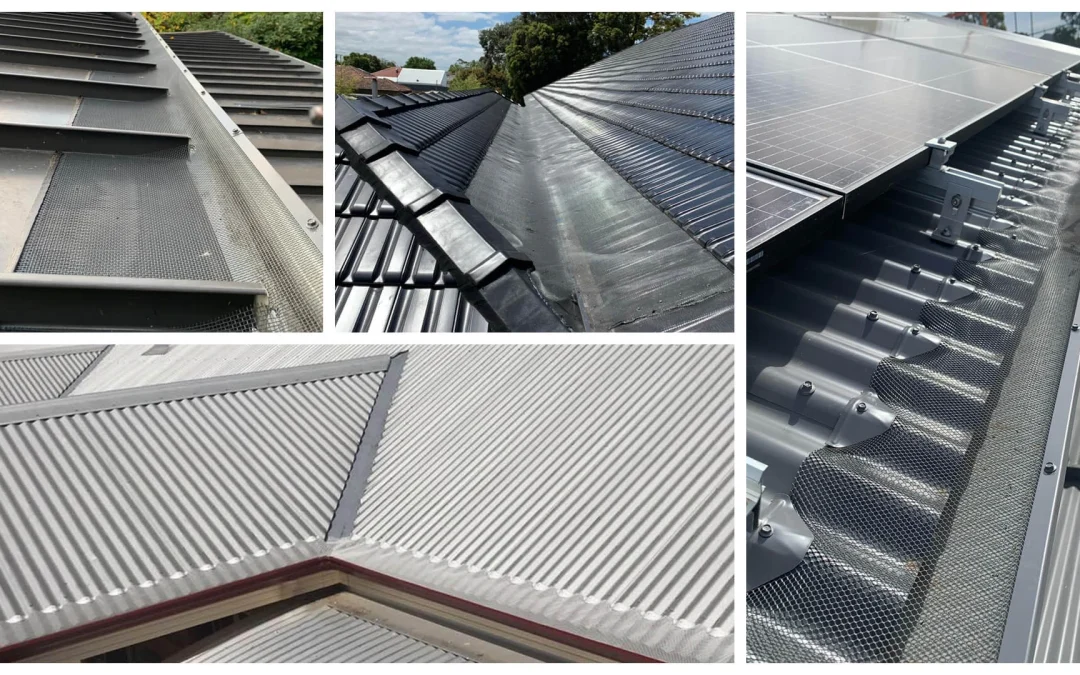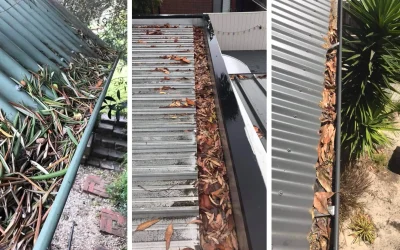When you type Best Leaf Guard near me for Water Tank Harvesting, you’re not just shopping for a roof add-on you’re protecting the quality and flow of your household’s stored rainwater. In Australia, where rain can switch from sprinkle to downpour in a heartbeat, the right leaf guard (and the right installer) makes the difference between a clean, fast-filling water tank and a sludge-ridden gutter that starves your storage.
This guide unpacks what matters, where CPR Gutter Protection fits in, and how to compare options without falling for gimmicks. We’ll talk mesh design, flow in heavy rain, tank hygiene basics like first-flush diverters and mosquito-proof screens, and the Australian standards you should ask about before you buy.
Why a leaf guard helps rain become great tank water
Leaves, bark and nesting debris break down in gutters, releasing tannins and fine particles that wash into tanks. A quality gutter guard keeps organic matter out, so your system captures more water with less gunk. That means steadier flow to downpipes and fewer blockages that cause overflows during big bursts. CPR outlines this benefit plainly its metal meshes are designed to keep vermin and birds out and increase rainwater collection by keeping channels clear.
Beyond capacity, there’s the water itself. Australia’s health guidance highlights how the first flush of a rain event often carries the heaviest load of dust, droppings and debris, which is why first-flush diverters are commonly recommended. Pair that with best gutter guard mesh in Australia that stops fresh debris entering at all, and you’ve reduced contamination at the source.
The “ski-slope” secret to heavy rain performance
One worry with any guard is water overshooting the gutter in a downpour. An integrated aluminium gutter guard mesh installed from roof edge to gutter lip forms a gentle ramp often called a “ski-slope” that guides sheet-flow into the gutter instead of letting it jump the bead. CPR explains how a well-fitted mesh reduces overshoot, preserves the gutter’s hydraulic capacity and evens out surges at valleys. If you’re in a region that cops summer storms, this detail matters.
Quick takeaway: for rainwater harvesting, look for gutter mesh systems that integrate into the gutter lip rather than flat insert trays. The better the water guidance, the more your tank captures during intense rain.
What to check when you’re searching Best Leaf Guard near me for Water Tank Harvesting
Use this checklist to compare brands and installers in your area:
- Mesh material & aperture
Prioritise powder-coated aluminium gutter mesh or high-grade steel for bushfire and durability. Aperture (hole size) should be fine enough to stop leaf fragments while letting water pass freely CPR’s metal meshes are designed for that balance and to block vermin and birds. - Integrated installation
Ask for a system that forms a continuous slope from roof cladding to gutter lip to reduce overshoot in heavy rain. CPR describes this approach specifically for sheet-flow control. - Valley coverage
Roof valleys dump concentrated flow and debris. A valley mesh prevents build-up and preserves flow into gutters CPR calls out valley solutions as part of a full system. - Tank-friendly setup
Ensure your overall system includes first-flush diverters and mosquito-proof screens on inlets and overflows; health and state guidance recommend them to improve quality and keep pests out. - Standards awareness
Components that contact drinking water often reference AS/NZS 4020 (suitability for products in contact with potable water). Ask suppliers whether any wet-contact parts in your system are AS/NZS 4020 compliant or WaterMark certified where applicable. (Note: not all roof meshes are within scope; the point is to check any wet-contact parts.) - Local experience
Choose installers who know Aussie roof profiles and bushfire considerations. CPR runs Australian-made gutter mesh systems and specifically references increasing rain capture while keeping pests out.
How CPR Gutter Protection lines up for rainwater harvesting
CPR focuses on metal gutter guard mesh solutions (aluminium, with design variants) that keep gutters clear and help increase rainwater collection by maintaining hydraulic capacity and preventing debris build-up. Their content also addresses sheet-flow behaviour, describing that integrated “ski-slope” fit that guides water into the gutter during intense rain. If your goal is reliable inflow to a water tank, these are the design cues to look for.
What CPR highlights publicly:
- Metal gutter protection mesh with an integrated fit aimed at reducing overshoot and blockages in storms.
- Bird and vermin proofing outcomes through enclosed entry points and continuous coverage.
- Australian-made gutter mesh and long-standing experience in local conditions.
Important note: Some Australian providers promote meshes specifically advertised as AS/NZS 4020 “water tank rated”. If that’s on your shopping list, ask the supplier for written evidence of the claim for any components that actually contact stored water. (This is a general due-diligence step; we’re not attributing that certification to CPR unless you see it in CPR’s own materials.)
The tidy tank blueprint: pair gutter mesh with simple hygiene measures
Even the best leaf guard won’t fix a neglected system. Keep the whole setup tight with these low-effort add-ons:
- First-flush diverter on each collection line to dump the grimiest first run of a storm. It’s a well-supported step in Australian health guidance.
- Mosquito-proof screens (insect mesh) on tank inlets, overflows and vents. Some state guidance notes penalties for non-compliant tanks; regardless, it’s essential for health.
- Leaf-shedding valleys with valley mesh so heavy bursts don’t deliver a mulch avalanche to your gutters.
- Periodic visual checks walk around after big winds. Most of the time your gutter guard will keep things clear; if you spot pockets of seed pods, brush them off before they compost.
Choosing between gutter mesh types
- Powder-coated aluminium gutter mesh: Robust, bushfire-sensible, long service life, commonly used by CPR. Good for coastal and urban homes seeking a balance of strength and lightness.
- Stainless micro-mesh: Very fine aperture for tiny particles; useful near conifers or small-leaf trees. Downside: ultra-fine screens may require more frequent surface brushing in dusty zones. (General industry guidance.)
- Foam or brush inserts: Quick to install but can clog internally; not ideal for maximising tank capture or for embers. (General industry comparison; some Australian sources prefer screened entries over inserts.)
Rule of thumb: For rainwater harvesting, prioritise leaf guard designs that shed debris and guide water in, not styles that create new places for silt to lodge.
Comparing quotes “near me”: what to ask
When you contact local providers for Best Leaf Guard near me for Water Tank Harvesting, put these questions on your shortlist:
- How is the mesh fixed?
Ask if it forms a continuous slope into the gutter lip to reduce overshoot in heavy rain. Request photos of similar roofs they’ve done. - What about valleys?
Confirm valley mesh is included where needed valleys are the hotspot for debris and surge flow. - What pests are you excluding?
Look for a design that is bird-proof and vermin-proof. CPR emphasises this outcome as part of a sealed installation. - Tank hygiene add-ons
Ensure the quote factors in mosquito-proof screens and first-flush diverters if your plumber hasn’t already installed them; these are widely recommended in guidance documents. - Standards and evidence
If a component will be in contact with potable water, ask for AS/NZS 4020 test compliance or WaterMark where relevant. Keep copies of any certificates.
Where CPR Gutter Protection fits for Aussies with tanks
If you’re weighing a shortlist, CPR is worth a look for homes that need:
- Aluminium gutter guard mesh that keeps channels clear and helps increase rainwater collection by maintaining flow capacity;
- Installs that address sheet-flow and overshoot at the gutter bead;
- Add-ons like valley mesh to deal with high-debris roof geometries;
- Solutions aimed at bird-proofing and keeping vermin from re-entering via new gaps created during installs.
As always, match the system to your roof profile, local tree types and rainfall patterns. If you’re coastal or in a bushfire-prone area, talk materials and apertures suitable for your setting.
Maintenance: minimal effort, maximum capture
Even with a top-notch leaf guard, a quick seasonal routine keeps everything humming:
- Seasonal brush-off of stubborn pods on ridge lines or at valley mouths.
- Check first-flush diverters after the first storm of the season empty and reset if needed.
- Walk the overflow path from gutter to downpipe to tank inlet; make sure mosquito-proof screens are intact.
These five-minute habits can add thousands of litres to your annual capture simply by preventing bypass and overflow.
Buyer’s summary
- The best leaf guard for rainwater harvesting isn’t the one with the flashiest marketing it’s the one that keeps debris out, guides water in during heavy rain and works with basic tank hygiene add-ons.
- CPR’s integrated gutter guard mesh approach is designed to reduce overshoot and keep gutters clear, supporting faster, cleaner tank fills.
- For tank health, pair your leaf guard with first-flush diverters and mosquito-proof screens. These measures are recommended in Australian health and state guidance.
- If any component will be in contact with potable water, ask about AS/NZS 4020 or WaterMark to ensure it won’t affect water quality.
Final word
If you want clean, fast-flowing capture without fuss, start with a well-designed gutter mesh that forms that gentle “ski-slope” into the gutter, add first-flush diverters and mosquito-proof screens, and choose an installer that understands Aussie roofs and storm patterns. With that sorted, your tank does what it should fill quickly, and store water that’s good to use.
FAQs
1. What makes a leaf guard suitable for water tank harvesting?
2. Will a leaf guard improve the quality of my stored rainwater?
3. Do I still need a first-flush diverter if I install gutter mesh?
4. How do I keep mosquitoes out of my rain harvesting system?
5. I get intense summer downpours. Will a leaf guard make water overshoot the gutter?
Social Share:
Related Posts
Leaf Guard choices for heritage and terracotta roofs: what works and why
Terracotta roofs are Aussie icons. Think Federation cottages, Californian bungalows…
How Leaf Guards Protect Against Australia’s Summer Storm Debris?
Each Australian summer brings not only warmth and sun but also the threat of severe storms…
How Gutter Guards Prepare Your Home for the Australian Autumn Leaf Fall?
Autumn in Australia brings a beautiful change in colour, but it also brings a flood of fallen…





